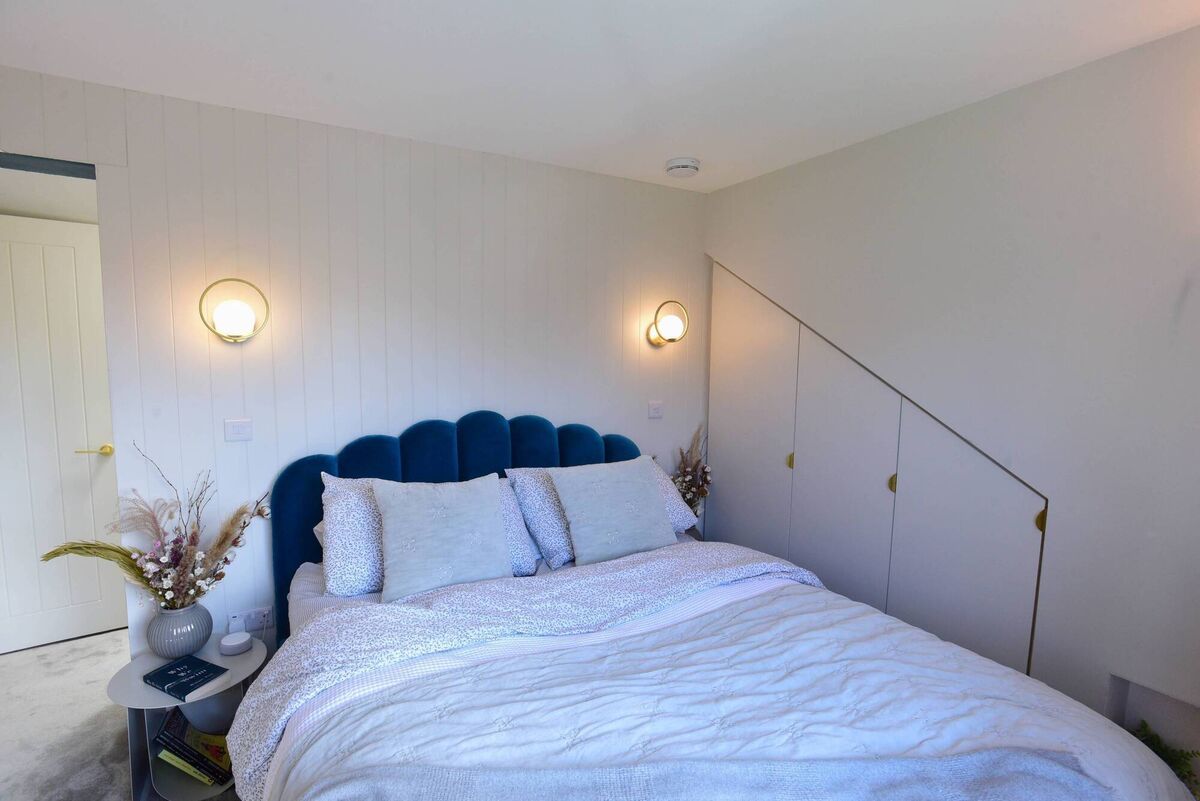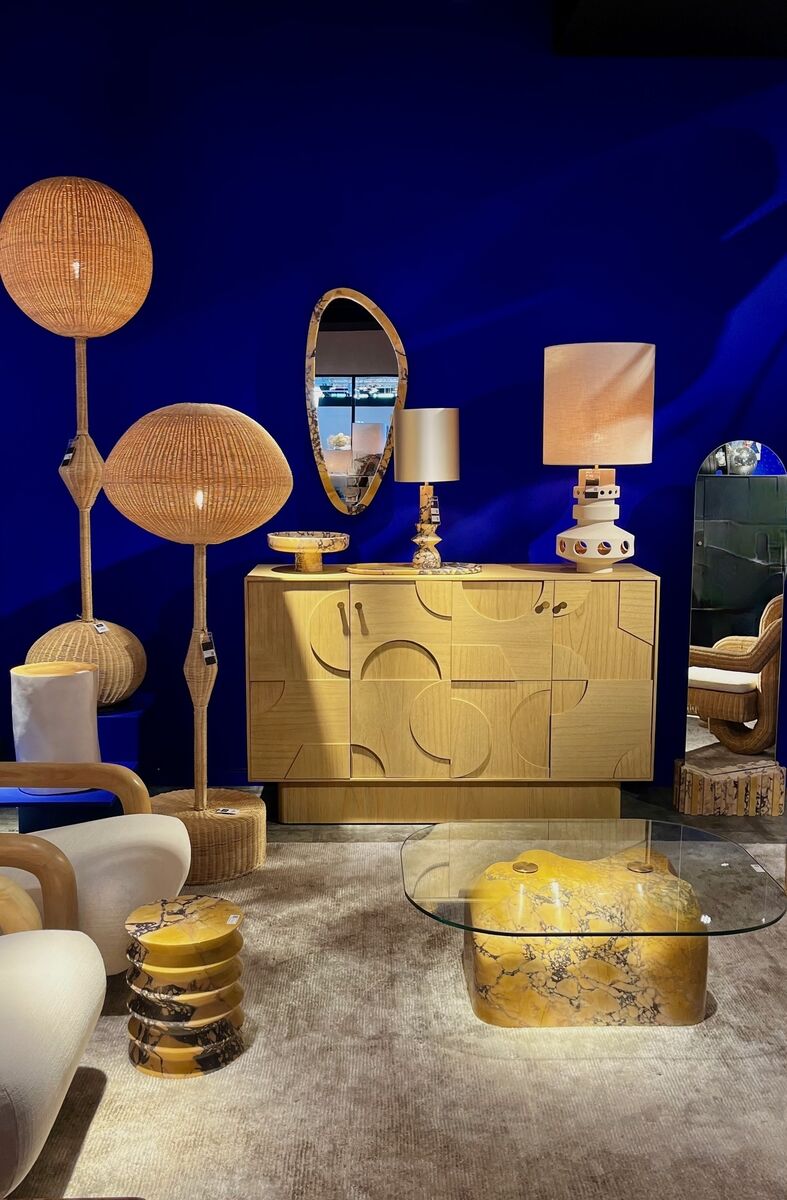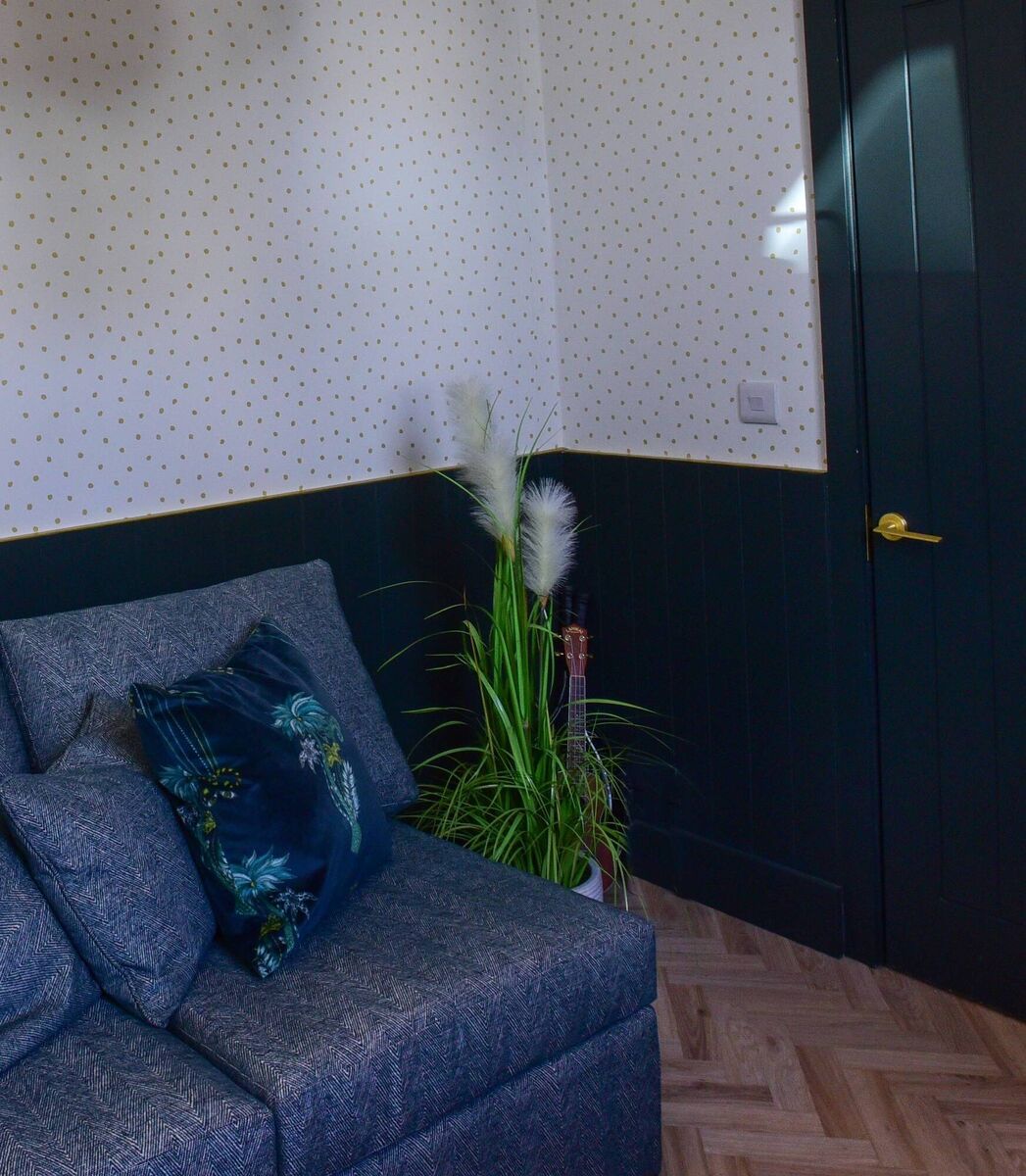Jennifer Sheahan: How to use paint and pattern to transform any room

Paint ceilings in a slightly lighter shade than the wall to create height, as Jennifer Sheahan has in her kitchen/dining/living area. Picture: Moya Nolan
There's something deeply satisfying about transforming a room with nothing more than a tin of paint or a roll of wallpaper and a bit of creativity. Paint and wallpaper are one of the most powerful — and affordable — tools in any decorator's arsenal.
Used cleverly, the right colours and patterns can make a small room feel spacious, a large room feel cosy, a low ceiling appear higher, and a narrow room seem wider. They can also, if used poorly, achieve exactly the opposite effect. But life is all about trial and error, so are some tried and tested paint and pattern tricks that actually work, along with the common mistakes to avoid if you want to transform your space rather than traumatise it. And if you do end up with a disaster, don't worry — it’s easily fixed.
The traditional advice for small rooms is to paint everything white and call it a day. While light colours do indeed reflect light and can make a space feel more open, this approach gets boring and can result in rooms that feel cold and sterile rather than spacious and inviting.
A more sophisticated approach is to use bright, mellow neutrals that still reflect light but add warmth to the space. Think warm undertones, pale mushroom tones, or the palest blush pink. These colours expand the space while maintaining a sense of cosiness.

One of my favourite tricks for small rooms is to paint the ceiling the same colour as the walls, but in a slightly lighter shade or in a higher gloss finish. This blurs the boundaries between wall and ceiling, creating the illusion of height and space. It's particularly effective in rooms with low ceilings, where a white ceiling can feel oppressive.
For pattern in small spaces, stick to small-scale designs or subtle textures. Large, bold patterns will overwhelm a small room and make it feel even more cramped. However, don't avoid pattern altogether — a gentle stripe or delicate floral can add interest without visual weight.
Large rooms present the opposite challenge — they can feel cold and unwelcoming, like you're rattling around in a space that's too big for comfortable living. Darker, richer colours are your friend here, as they absorb light and make walls appear closer, creating a more intimate atmosphere.

Don't be afraid to embrace deep, saturated colours like forest green, navy blue, or rich terracotta. These colours can make a large room feel wrapped and cosy rather than cavernous. In large rooms, you can also afford to be more adventurous with pattern. Bold, large-scale designs that would overwhelm a small space can work beautifully in generous proportions. Consider a statement wallpaper and use pattern to define zones within a large room.
Paint placement can dramatically alter how we perceive a room's proportions. If you have a long, narrow room that feels like a corridor, painting the two shorter walls in a darker colour will visually pull them closer together, making the room feel more balanced. This also works well in a long, narrow hallway — painting the inside of the door and the wall at the end the same darker colour.
For rooms with high ceilings that feel out of proportion, paint the ceiling in a colour that's a few shades darker than the walls. This will visually lower the ceiling and create better proportions. The reverse works too — if your ceilings feel oppressively low, paint them in a lighter shade to push them upward visually. For a sophisticated twist, bring the ceiling paint part of the way down the wall.
Pattern doesn't have to be loud to be effective. Sometimes the most successful uses of pattern are the most subtle — think tone-on-tone wallpapers, textured paint finishes, or gentle geometric designs that add depth and interest without overwhelming.
Stripes are particularly useful for manipulating how we perceive space. Vertical stripes draw the eye upward, making ceilings appear higher, while horizontal stripes can make a narrow room feel wider. If you're nervous about committing to pattern on walls, try using patterned wallpaper in smaller spaces like powder rooms or hallways. These areas are perfect for experimenting with bolder choices without overwhelming your main living spaces.
One often-overlooked aspect of paint and pattern is how they affect the flow between connected spaces. Abrupt colour changes from room to room can make a home feel choppy and disjointed. Instead, consider using variations of the same colour family throughout your home, or choose colours that complement each other.
This doesn't mean everything needs to match — variety is important for visual interest. Rather, think about creating a cohesive palette that allows each room to have its own personality while contributing to the overall harmony of your home.
One of the biggest mistakes I see people make is choosing paint colours based on tiny swatches in artificial lighting. Natural light changes dramatically throughout the day, and what looks like a gentle grey at midday might appear blue or green in the evening. Always test paint in your actual space, either by painting onto the walls or by painting on a large sheet of white paper and hanging it on the walls, and observe it at different times of day before committing.

Another frequent error is ignoring undertones. That "neutral" beige might have pink undertones that clash horribly with your existing furnishings, or that "safe" grey might have blue undertones that make your room feel cold and unwelcoming. When in doubt, take your paint samples outside and look at them in natural daylight — undertones become much more obvious. An even more effective tip is to buy a sample pot of pure white paint, pour in a few drops of your desired paint, and mix to show up the undertones.
When it comes to pattern, the most common mistake is poor scale selection. A tiny pattern in a large room will look busy and insignificant, while an oversized pattern in a small space will be overwhelming. The pattern should be proportional to the room size and the other elements within it.












